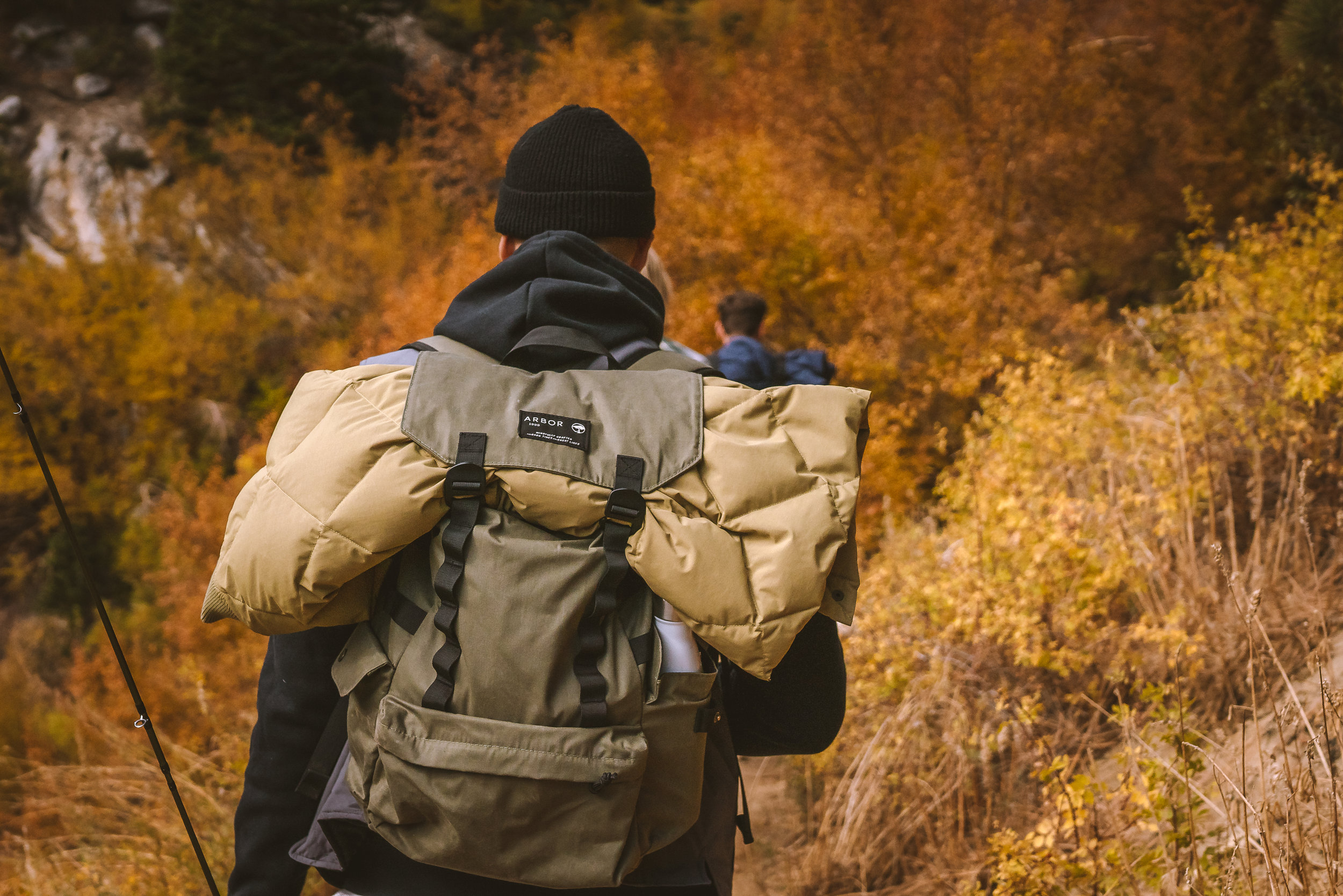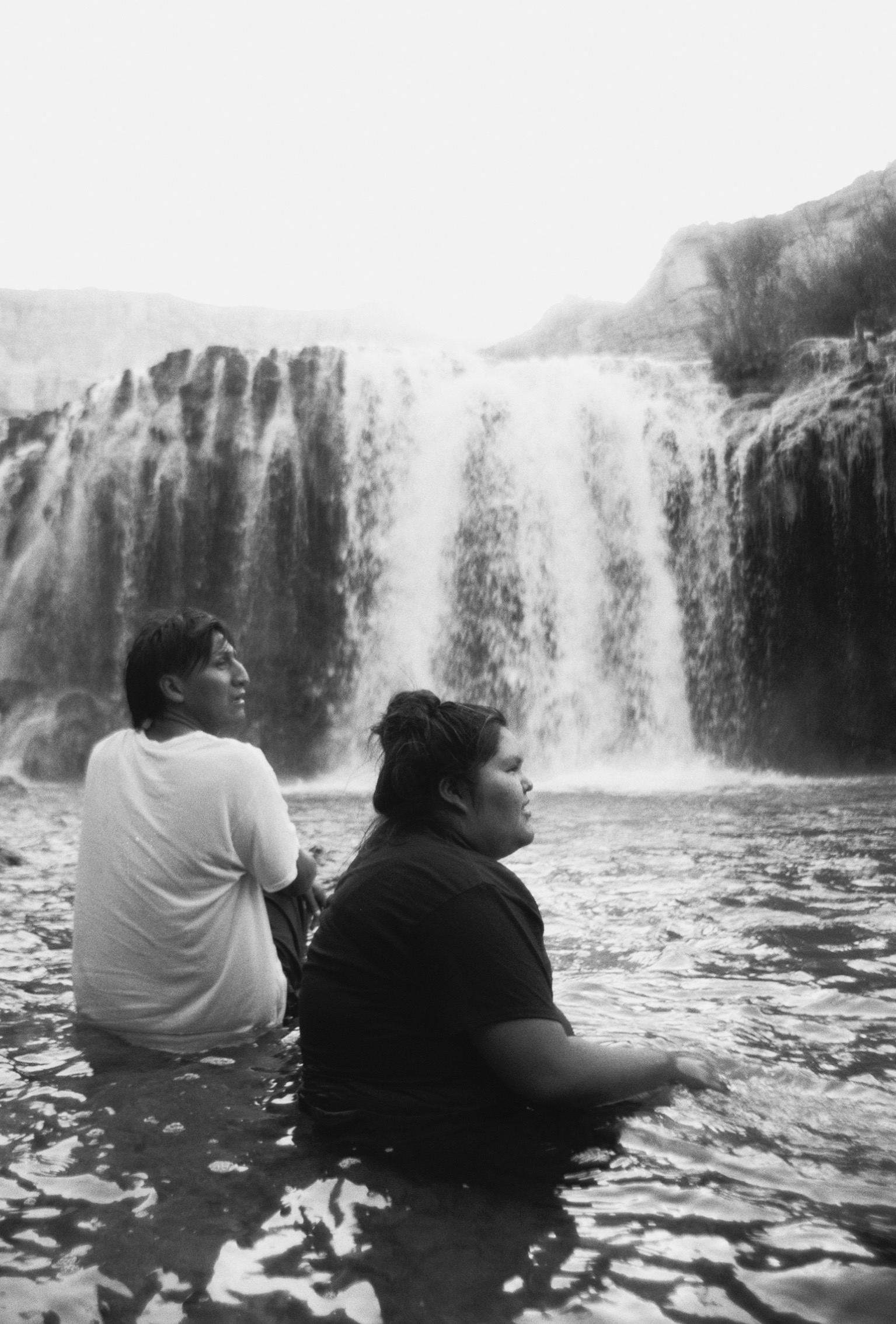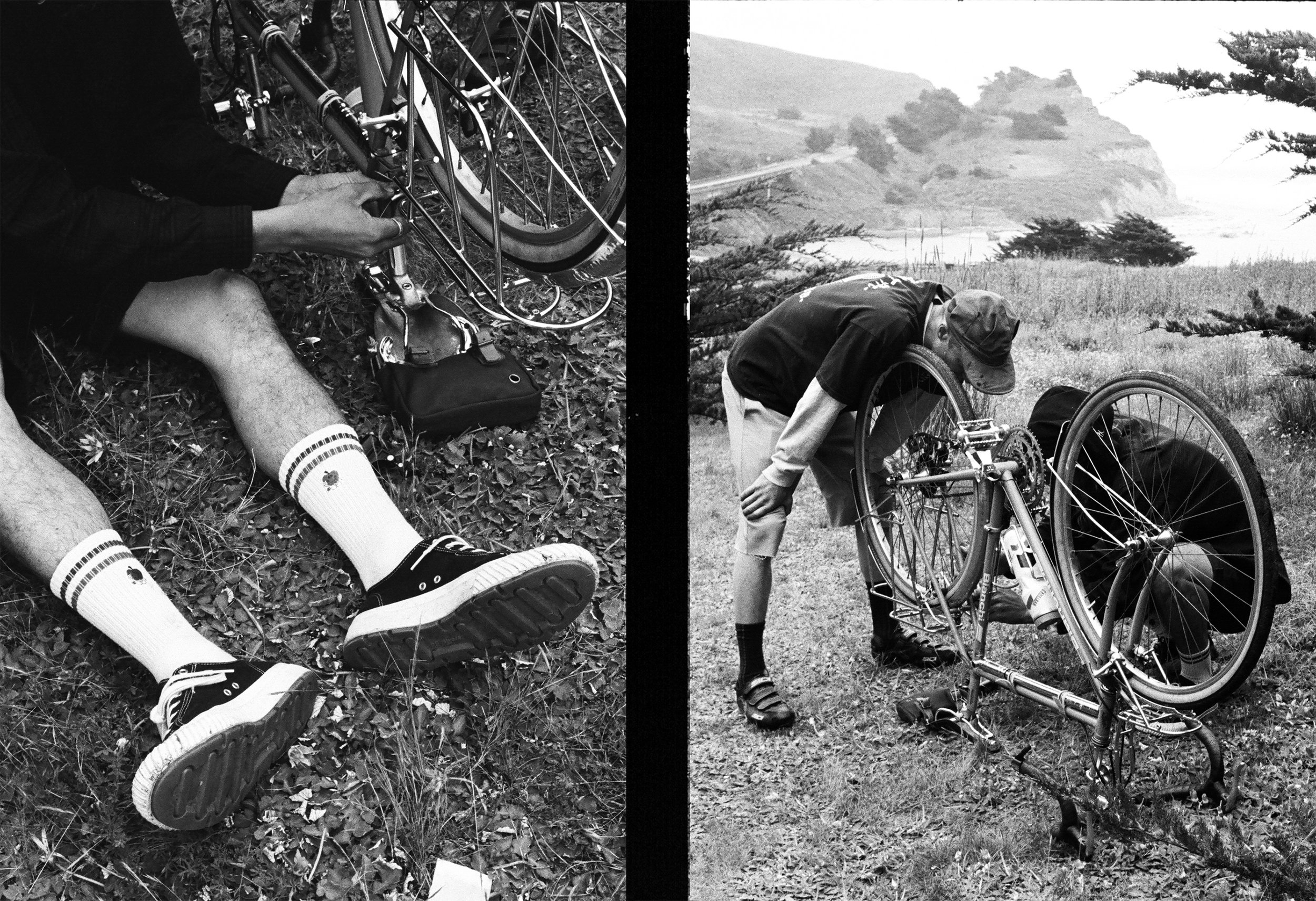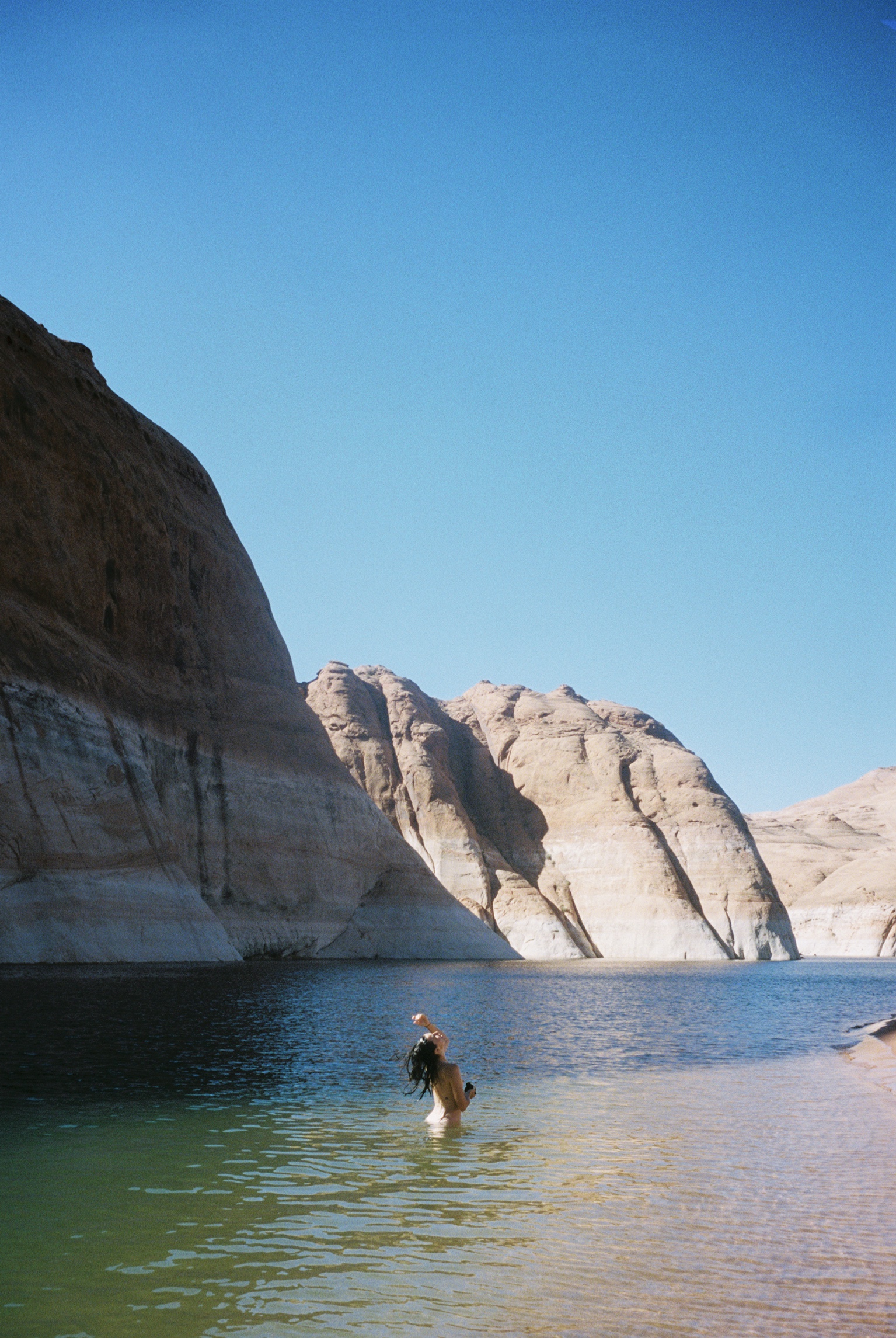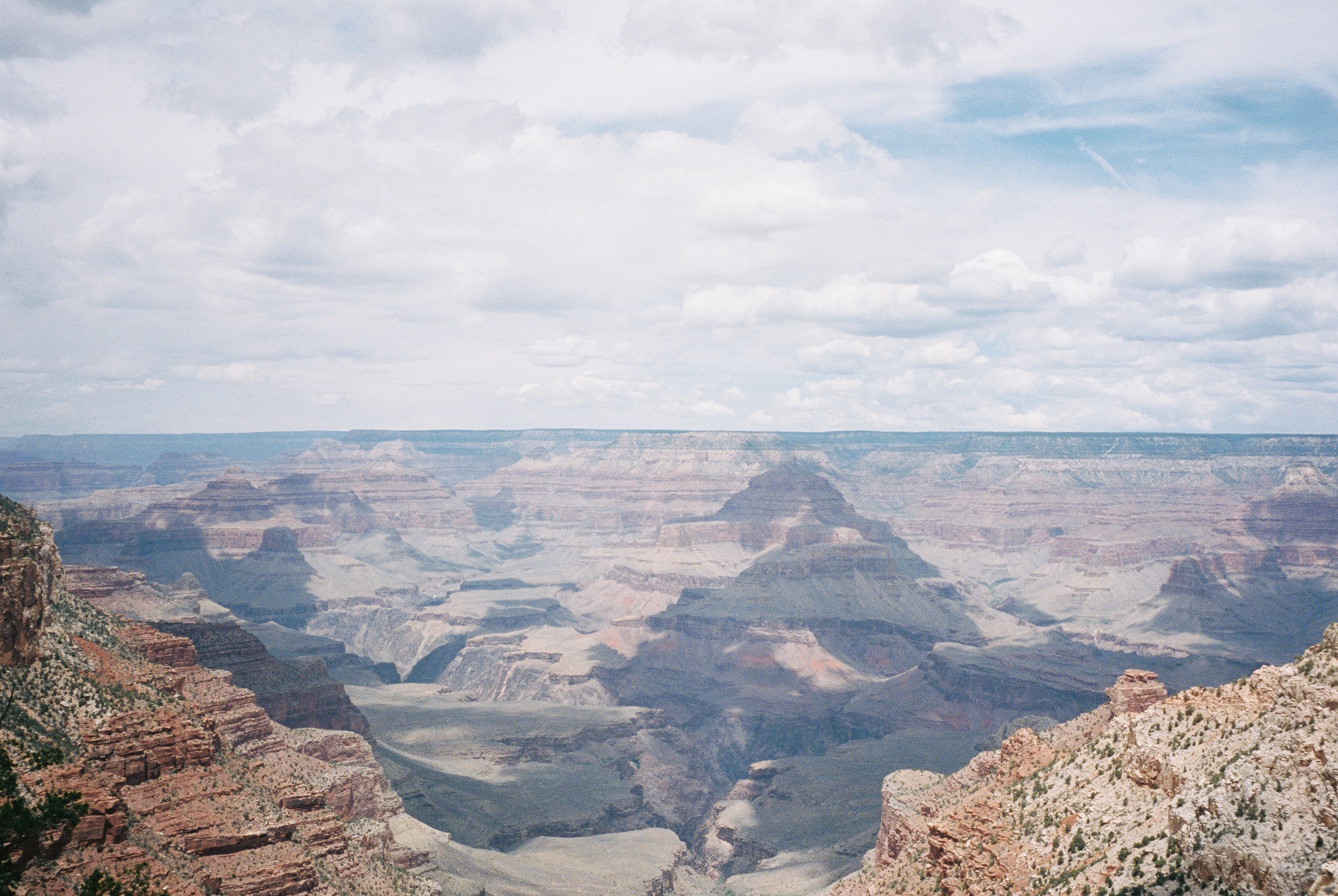Escape from the Kickflip
Stay Wild
Expanding My Perception of Skateboarding
Story by Sam Sawyer // @samsawyer
Photos by Caleb Keller // @calebkellerphotos & Matt Smith // @matthewgsmithphoto
I can’t kickflip anymore, at least not in a way that looks cool. At 39, I can still do many of the skate tricks I’d fought so hard to learn in my youth, an undeniable victory in the inevitable loss that will come with the battle against time, age, decay, and death. When I was 30, I broke my flip ankle (skaters typically use their front foot to flick the board in directions that send it in controlled off-axis flips and spins) while skating and it didn’t heal properly. Now it just doesn’t work to do a proper kickflip. Undeniably middle-aged, I’ve learned to accept the deleterious changes that are unavoidable in my body. Skateboarding, the very thing that put me face to face with the downfall of my athletic prowess, is what has taught me to celebrate the amazing shifts in perception, attitude, and understanding that age brings.
Skateboarding has always been a means of escape. Growing up in the suburbs, I was in a perpetual state of boredom with the feeling that I was out of place, which is a weird feeling for a 12-year-old because at that time, there was no way to know what else is out there; one just had the feeling that there must be more. I mean, my cultural awareness was limited to what I saw on basic cable and heard on Beastie Boys records. But one thing I knew for sure is that I wanted out. And it turned out I wasn’t alone. Elementary school would turn to junior high, and junior high to high school. And with those changes, bigger and bigger pools of like-minded misfits would converge and form bigger and bigger skate crews. Through a shared love of skateboarding and truancy, I found my people. And my escape from the suburbs to a new and exciting terrain: the city.
Like invading regattas of pimpled potty-mouths from the suburbs, we would cram into beat-up, hand-me-down Honda Civics and Toyota Tercels like clown cars and explore downtown’s vastly superior collection of concrete barriers, benches, curb-cuts, stairs, handrails, parking blocks, gaps, sidewalk bumps, and any number of tediously esoteric features that only a skateboard enthusiast would look at and feel the need to spend entire afternoons attempting one trick over and over again until they landed it. One thing people who aren’t skaters completely miss about skateboarding is that much of the beauty in this activity lies in the reimagining of urban spaces for something entirely new. Benches are no longer just for sitting. Handrails now offer an entirely new form of support. We are a troupe of improv dancers whose stage is the entire urban landscape. We just see the world differently and obsess about things that most people miss.
My idea of what skateboarding meant was fixed for most of my life. To my friends and I, skateboarding was very strictly boards shaped like popsicle sticks with an upturned nose and tail meant to ollie, flip, grind, and slide. It was most certainly not longboards, plastic boards, Ripsticks, electric skateboards, hoverboards, or scooters. Skateboarding meant exploring new, exciting urban areas full of challenging obstacles that we could freestyle through much like John Coltrane would wander through musical scales and found beautiful, unexpected new pathways to your ears. It was not pushing mongo (to push mongo is to push your skateboard with your front foot instead of your back—very unstylish) around a college campus on a board so big it barely fits in your trunk. Looking back, I’m ashamed as I see that restrictive attitude goes against the very thing that I loved about skateboarding: Skateboarding can be whatever you need it to be. And I needed it to be a cultural escape and a fixed personal identity.
Since I was 18, I’ve spent every moment of my life living in a decidedly urban area. I can directly attribute skateboarding for being my ticket out of a place that was simply not a path to happiness or personal growth for me, and for finding a place in life that makes me feel inspired and fulfilled. Everyone should be so lucky. Throughout my adult life as a skater, my once-strict stance on what skateboarding is and is not has softened because of other people sharing their experience with skating. Because skateboarding is whatever a person needs it to be, I’ve learned to embrace alternative board shapes, styles, wheel hardnesses, and other esoteric things about skateboarding I once thought was lame. I’ve found so much satisfaction and personal growth in bringing a weird-shaped board to a skate spot that I thought I knew intimately on my “normal” board. I find new lines through skateparks and bowls on boards that 10 years ago, I would have turned my twice-broken nose (thanks again, skateboarding) up at. I have a board so small that it fits in my carry-on and I bring with me on every work trip so that I can explore the foreign city from a familiar position: on a board. Viewing the world as a skateboarder has taught me to appreciate, embrace, and love the change that life brings.
A crew of skaters from Arbor Skateboards invited me on this skate/camp trip to the desert at the base of Mount Whitney, about four hours north of my home in Los Angeles, to an area called the Alabama Hills. I didn’t know any of the people going on the trip very well, but I wasn’t worried about that. If you’re an adult and still skate, you will most certainly find common ground and a new friend with me. Near the Alabama Hills, there isn’t much going on outside of a lot of pride for the John Wayne westerns that were filmed there and a network of empty mountain roads. A skate trip to the desert? Sure, I guess—but what would we skate? There’s a tiny skatepark nearby, but not one worth traveling for. There was certainly no urban wasteland to shred through. But, just like all things through skateboarding, I would learn to repurpose my surroundings. The hills.
Our camp spot, nestled in a maze of massive sand-colored boulders, the smallest ones as big as my truck, became home base for the trip. Huddled around a fire, we got to know one another as well as we got to know the giant bottle of whiskey (and the giant joints that kept mysteriously appearing) that we shared over a couple of nights—very well. Topics of discussion were varied, but our experiences with skateboarding, the magical thing that brought us all together for this trip, was the topic we came back to over and over. A lot of talk of the golden years, unavoidable for people near-or-approaching middle age, but one thread that I found to be enlightening was the idea of having a skateboard quiver. Essentially, it’s a right tool for the job ethos that when applied to skateboarding, would amount to owning a variety of skateboards, each for different uses. A “normal” trick skateboard sure, but also setups that are better equipped for rough roads, short trips, long hills, travel, or any number of other considerations that would make a “normal” popsicle stick-shaped board a poor choice. Surfers figured out decades ago that by owning a variety of differently-shaped surfboards, they could tune any given surf session to their personal ability, style, preference, wave shape, or wave conditions through a quiver of different boards, maximizing their experience in the water. Why had this idea never occurred to me with regard to skating? This was the ideological explanation I didn’t even know I was looking for.
We had left Los Angeles to find a quick dose of nature and mountain roads steep enough to give ourselves over to gravity. We found ourselves in a classic two birds, one stone situation driving up to the Mount Whitney Trailhead. The roads were steeper than I’d ever skated down and more beautiful than any place I’d ever imagined where I’d have a skateboard under my feet. After dispatching all available adrenaline to all parts of our bodies with some classic hill bombs, we managed to make our way to the Mt. Whitney Trailhead for a “light” hike. We, a ragtag group of skaters not suitably prepared for the hike we were about to embark upon, headed up to Lone Pine Lake, mostly in holey skate shoes. Not all of us made it to the top, but those who did were rewarded with a lite Mexican lager, a handful of nuts, and the most beautiful high alpine lake I’ve ever seen. Our group’s most accomplished outdoorsman, Tom, is a fly fishing guide and brought two fly rigs. We didn’t catch anything worth eating or bragging about from the lake, but what fish we did catch were a perfect metaphor for this trip: unexpected and beautiful. There was plenty to reflect upon staring into the lake.
Bombing down empty desert mountain roads, while not technically challenging, was easily the most fun I’d had on a skateboard in years. I was reminded as to why I started skateboarding in the suburbs of Minneapolis over 30 years ago: as a means of escape. Escape from the banal realities of the suburbs and escape from the pre-assigned usage of the cities I’ve loved living in. Only this time, I was escaping from the sometimes-oppressive realities of being a real adult with real responsibility in a really big city. I shouldn’t have been surprised that the simple act of speeding down a hill on a skateboard, in a beautifully-desolate landscape, would provide me with such an emotional release and a much-needed escape from reality, but I was. Skateboarding has, once again, provided me with an outlet to find inner peace. Even with a bad ankle.















